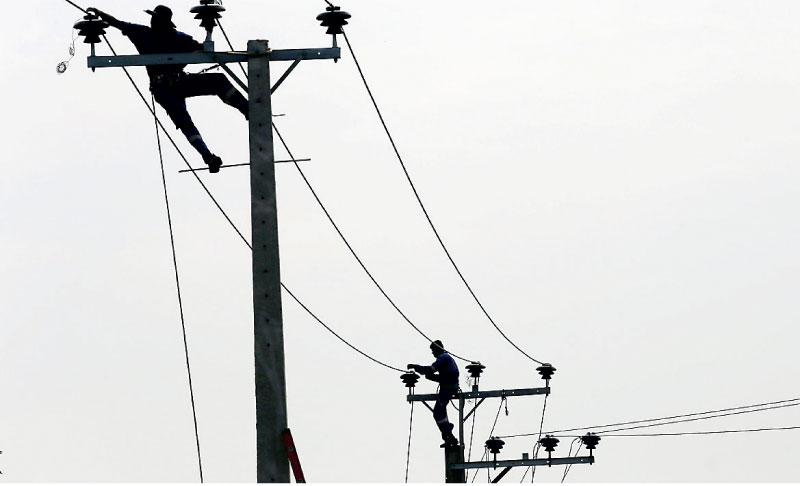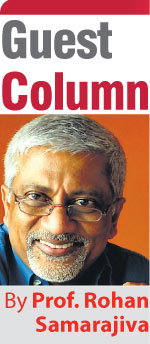Saturday Dec 06, 2025
Saturday Dec 06, 2025
Monday, 15 August 2022 00:10 - - {{hitsCtrl.values.hits}}

 The Committee appointed by the Minister of Power and Energy to restructure CEB is said to have two months to submit its report. There appears to be wide agreement that the largest State-owned enterprise in its current form is not delivering good service at affordable prices.
The Committee appointed by the Minister of Power and Energy to restructure CEB is said to have two months to submit its report. There appears to be wide agreement that the largest State-owned enterprise in its current form is not delivering good service at affordable prices.
Independent regulation is seen the world over as contributing to improved performance of utilities. The meaningful regulation of this State-owned utility, smaller only than the Sri Lanka Army, should be among the most important considerations taken into account by the Committee in making its recommendations.
The difficulties of effectively regulating CEB under the present structure are explained using examples from the 2022 tariff case, and some solutions outlined.
Tariff regulation
Section 30 of the Sri Lanka Electricity Act, No. 20 of 2009, governs the setting of electricity tariffs. The relevant licensees (CEB and LECO) are to set the tariff according to a cost reflective methodology approved by the PUCSL. The tariff must permit the licensee to recover all reasonable costs incurred in the carrying out of the activities authorised by its licence on an efficient basis. The tariff must be approved by the Commission in accordance with general or specific policy guidelines approved by Cabinet and be published.
In other words, PUCSL should not approve the tariff if CEB and LECO have not followed the cost-reflective methodology, or if the licensee is seeking to recover costs that are not reasonable and for activities that have not been conducted efficiently. If the PUCSL cannot make the above judgements or act in ways that would impact the licensee’s behaviour, it may be concluded that CEB is not fully regulatable at present.
Can the PUCSL act on unreasonable costs?
According to the PUCSL, over 90% of the costs considered in relation to the 2022 tariff proposal were costs of imported fossil fuel: coal and oil. Obviously, any unreasonableness or inefficiency associated with these costs would have a significant impact on the approval of the tariff. The data sheets provided during the tariff approval process included a category of “retail cost” amounting to Rs. 16,485 million (3.18% of total costs). Cost disallowances in this category would have a minimal effect on the tariff that will have to be paid by the consumer. The ability of the PUCSL to act on unreasonable costs in these large and small categories will be examined.
Fuel costs
It is well known that fuel markets are volatile, and that prices are particularly high in 2022, driven by the Russia-Ukraine war and the responses of the major fuel consumers to it. According to a Sunday Times article published on 16 January 2022, the Lanka Coal Company paid the highest-ever price of $ 272 for a metric ton (MT) with freight, following discomfort among sellers about the financial status of Lanka Coal. This was for a spot tender of 480,000 MT, floated after the original procurement failed.
In 2019-20, the average price per MT had been $ 89 (unclear whether this included freight or not); in 2020-21 it was $ 84.49; by 2021-22 the average price had jumped to $ 167. The difference in overall cost from 2020-21 to 2021-22 (for 2.25 million MT) was $ 173 million. In current Sri Lanka rupees, the difference is in the range of 65 billion.
Court cases have documented irregularities in coal procurement. For purposes of illustration, it may be assumed, reasonably, that there could have been a 10% unreasonableness in coal purchases. That would be Rs. 6.5 billion. This would, of course, have to be proved directly with forensic evidence or by comparison with benchmark prices.
Can the PUCSL disallow Rs. 6.5 billion in costs (1.25% of the total)? In the context of utilities with shareholders that are subject to Rate Base Rate of Return regulation (RBROR, the technical term for regulation that looks at the reasonable of costs incurred), this would be normal. The disallowed costs would be deducted from the rate base (the total costs) and the tariffs would be computed based on the lower number. Depending on the extent of disallowance, the tariffs could be noticeably lower.
The disallowed costs must be borne by someone. In the case of a private utility, that would be the shareholder. But in State-owned utility, this is not possible. If any costs are disallowed, the utility is likely to claim that it has been deprived of funds to provide continuous electricity. Or Treasury will have to print money and make up the difference. The former is politically unfeasible; the latter is economically unfeasible. The PUCSL cannot disallow substantial unreasonably incurred costs.
The other solutions are to delay the tariff approval or to impose conditions on a future tariff approval. When the losses of the utility are threatening the stability of the entire economy, the former is not realistic. The PUCSL has imposed conditions on the CEB in the past. They have been wilfully ignored. The PUCSL can refuse to approve the tariff (we loop back to the excluded option above) or fine the licensee. However large or small the fine is, it will come from CEB funds that would otherwise be used for the supply of electricity. It will have no effect on the behaviour of CEB managers. It is likely to make the political authorities take umbrage at the regulator.
Retail costs
It is now known that CEB employs thousands of meter readers. They draw high salaries and are said to read only 60 meters a day. Because of low-user tariffs, the cost of monthly meter reading is likely to be larger than the value of the monthly bill (until the recent tariff increase, around 2.5 million households paid less than Rs. 300 a month (under the new tariff system, about half that group will pay less than Rs. 300/month and the rest will pay less than Rs. 800). Recently it was revealed at the Committee on Public Enterprises that Rs. 2,134.9 million was spent on allowances (one for reading the meters; and the other for reading it accurately) for meter readers over and above the base salaries in 2021.
It would be easy to establish that a significant portion of meter reading costs are unreasonable. If we assume for example that Rs. 2.1 billion of retail costs are disallowed, it would make the public and politicians happy. However, it would only bring down the retail costs from Rs. 16.5 billion to Rs. 14.4 billion (3.18% to 2.8% of total costs). There would be no noticeable impact on tariffs, but it would be a public relations coup for the PUCSL. The CEB management will face the unpleasant consequences. Considerable costs will have to be borne if they have to terminate some of these redundant but well-organised employees.
First-best and second-best solutions
As long as the present ownership structure of CEB is maintained, the best that the regulator can do is to engage in cosmetic actions such as disallowing patently unreasonable allowances (as described above) and bonuses (as mentioned in the 2022 tariff order). There would be little impact on tariffs because the major costs are incurred for generation.
If one is to have an impact on the reasonableness of costs and the efficiency of operations, there appears to be no alternative but to step back from fully State-owned utilities, at least to public-private partnerships, as with the Delhi distribution company.
Since 2002, Tata Power Delhi Distribution Ltd. has been owned by a PPP between the Government of Delhi and Tata Power, which holds a majority 51% stake. Since then, the PPP has paid a total dividend of INR 3.67 billion on five occasions to the shareholders. It is only with this kind of ownership structure, that disallowance of unreasonable costs and the imposition of fines make sense. Effective regulation requires dilution of state ownership.
This first-best solution may not be feasible at this time, despite the enormity of the crisis we are in, and the contribution made to that crisis by the current order in the electricity sector.
The second-best solution is to create the conditions for the exposure of accurate and comprehensive information by the utility. The necessary condition for disallowing major costs is the availability of information. Without this, it would not be possible to obtain evidence to establish the unreasonableness of the major cost components. At present the PUCSL has taken CEB to court for refusal to provide information, as mandated by law. As long as the different units within CEB and not structurally separated and the current culture of collusion among the managers of the different units continues, the trench warfare over information will continue.
The sole justification for regulation of state-owned utilities is the potential of extracting accurate and comprehensive information from them to use in benchmarking or yardstick regulation. The restructuring committee should at least implement this second-best solution.
Effective regulation requires accurate information for evidence-based decision making. Therefore, information is described as the oxygen of regulation and all regulatory statutes and licenses contain strong powers to ensure accurate information is provided to the regulator. It is also the reason most regulators experience significant difficulties in extracting the information needed for their work.
Benchmarking or yardstick regulation provides a solution. Here, the performance of the regulated entity is compared with others either to serve as leverage in extracting information or to “name and shame.” For example, certain cost elements needed to set prices may be withheld by the regulated entity. The regulator may announce that benchmark data will be used instead unless the regulated entity provides the information forthwith. Or the regulator may name and shame the regulated entity by showing how inefficient or negligent it is by comparing its indicators with those of comparators.